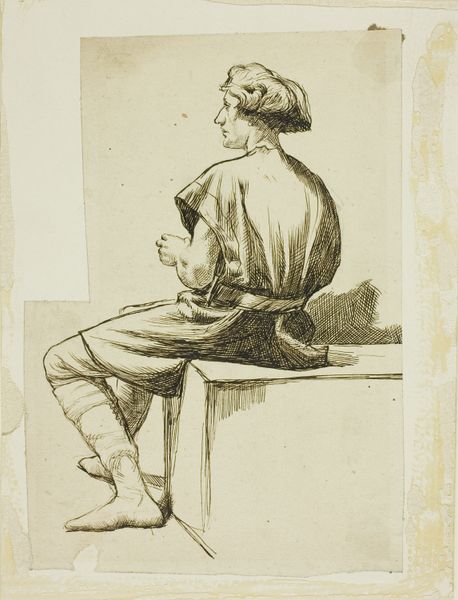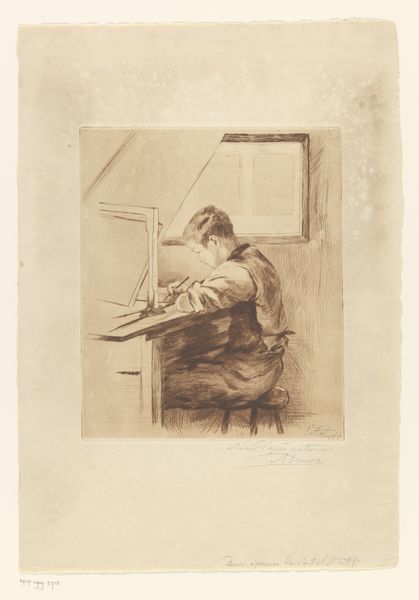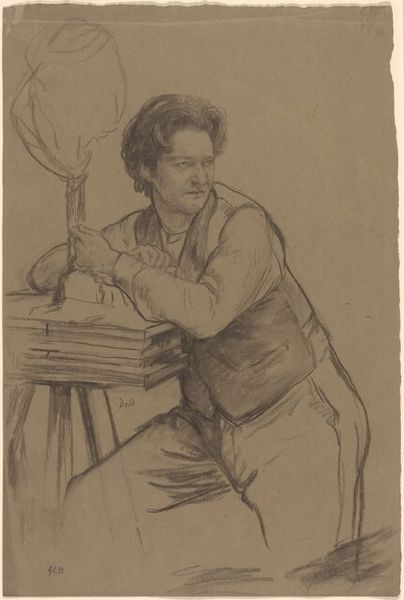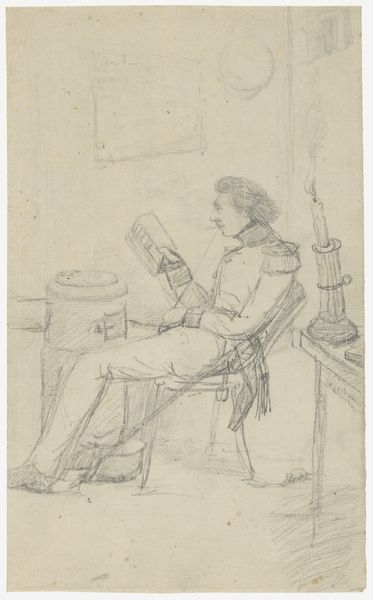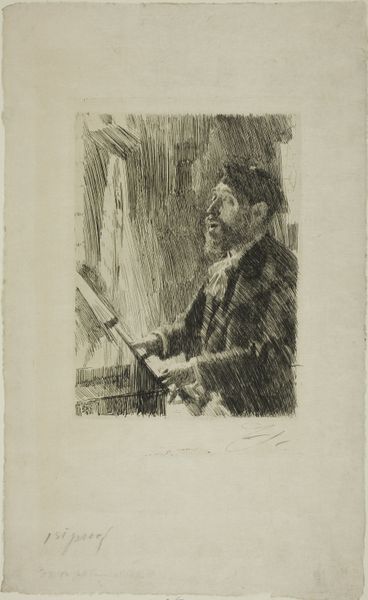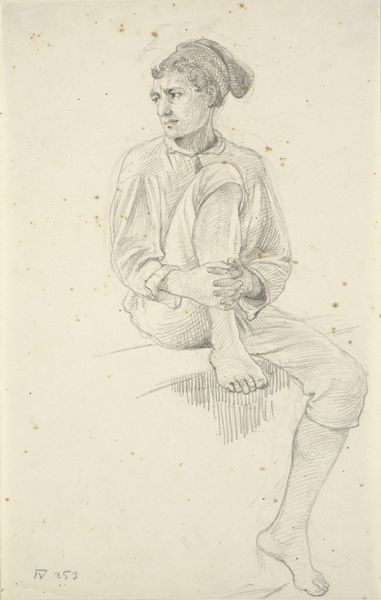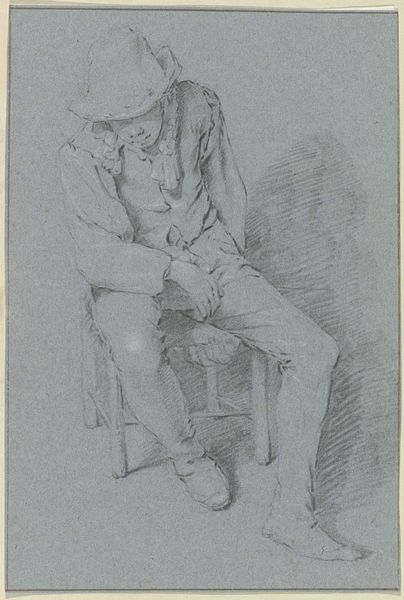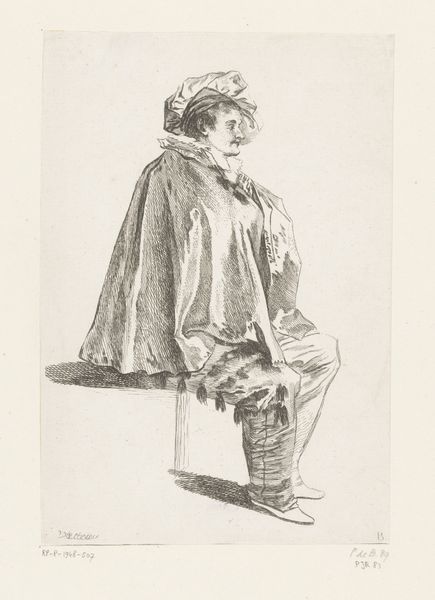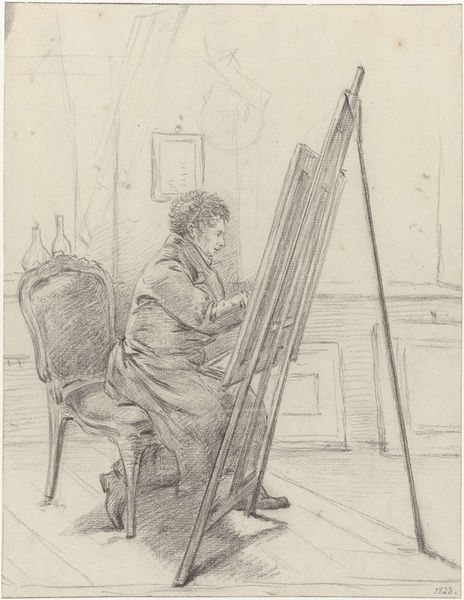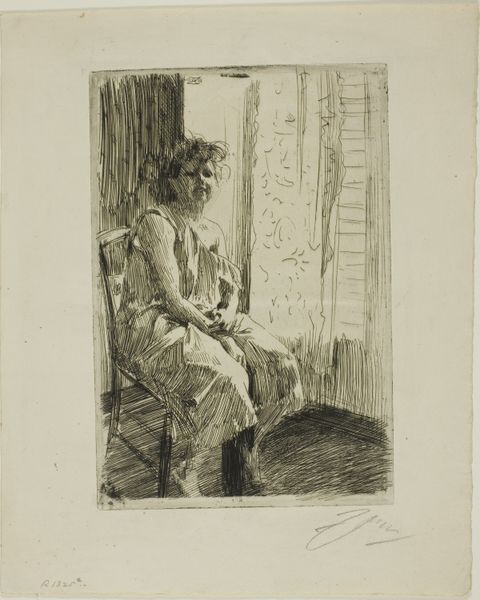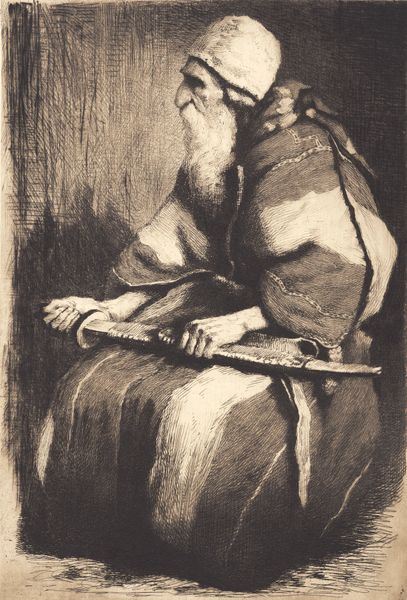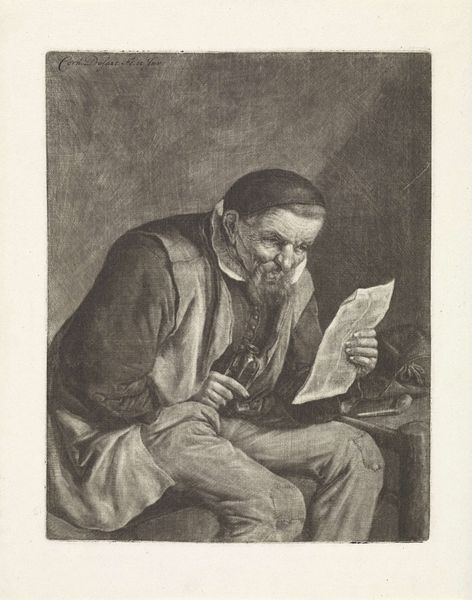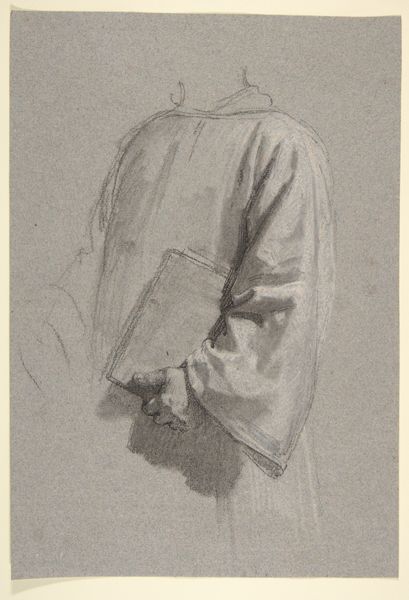
drawing, pencil, graphite
#
portrait
#
drawing
#
charcoal drawing
#
pencil drawing
#
pencil
#
graphite
#
portrait drawing
#
realism
Dimensions: height 404 mm, width 304 mm
Copyright: Rijks Museum: Open Domain
Curator: Welcome. Before us, we have Francis Dodd's "Portrait of Jacob Epstein," a graphite and pencil drawing from 1909. Editor: Oh, moody. I like it. It’s intimate, even though the figure's not looking at us. The somber tones draw you in. Makes me wonder what he's thinking. Curator: It's intriguing how Dodd chose to portray Epstein. There is a palpable tension between the subject’s contemplative expression and the unyielding stone he's working on. Epstein’s averted gaze creates a sense of depth, pulling the viewer into his inner world. Editor: He's literally and figuratively shaping something. That tension is amazing! You feel like the raw stone is full of hidden meanings, of future potential...almost as though the man himself has depths. Curator: Indeed. And observe how Dodd uses graphite to capture the texture of the stone, contrasting it with the softer lines of Epstein's features. Consider how those deliberate lines signify not just an outer likeness but a psychological state. Editor: It does have that charged stillness that tells you, under the surface, things are churning. What’s interesting is knowing this is Epstein, later famous in his own right, caught here in an early moment. Almost like catching a myth in the making. Curator: Precisely. The work offers a snapshot into the early careers of two significant figures in the art world, and consider that a portrait often functions as a kind of cultural mirror. Editor: Right? It’s like history observing itself, captured in monochrome. I feel like I'm not just looking at Epstein but at a particular moment in artistic history. It's a drawing but holds all the weight of sculpture...all the dreams of a generation on the cusp of modernity. Curator: Well said. Dodd manages to convey both the personal and the universal, reminding us of the power of art to immortalize, reflect, and question. Editor: Yeah. This piece has legs. Definitely stays with you after you’ve moved on. It makes you feel the quiet of creation—even after all these years.
Comments
No comments
Be the first to comment and join the conversation on the ultimate creative platform.
